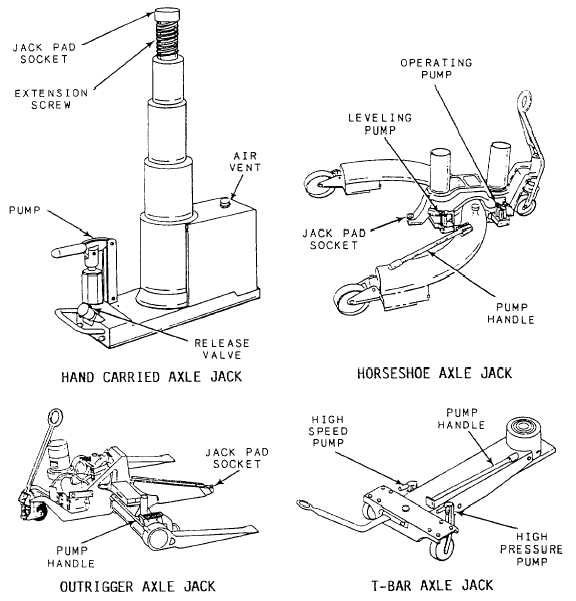Figure 3-27.—Types of axle jacks.
wheels, and struts. There are four different types of axle
jacks and many different sizes (lifting capacity in tons).
Figure 3-27 shows the four types of Navy axle jacks.
The smaller hydraulic axle jacks are normally squadron
or unit permanent custody equipment. That means your
outfit is responsible for making sure the jacks are load
tested at the support equipment (SE) division of the
aircraft intermediate maintenance department (AIMD)
before being put into service, and annuall y thereafter.
Special inspections include 13 week inspections at
AIMD S/E, but a load test is not required every 13
weeks. A record of maintenance, inspections, technical
directives, and load testing is kept on OPNAV form
4790/51
All model designations for axle jacks begin with the
letter A, for axle, such as A 10-1HC. The number
following the A shows the jack capacit y in tons, such as
10 for a 10-ton jack. This is followed by a dash (-) and
the specific jack identification number. Then comes two
letters that show the type of jack (HC = hand carried,
HS = horseshoe, TB = T-bar, and OR = outrigger).
HAND CARRIED.—These axle jacks are portable,
self-contained units, with single or double manually
operated pumps. They have carrying handles, pump
handles, reservoir vent valves, release valves, and safety
valves. The different model sizes vary from 4 3/4 inches
to 9 inches high (closed). Their weights vary from 26 to
120 pounds.
3-38

